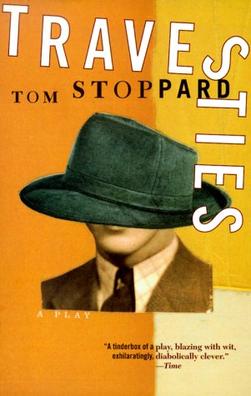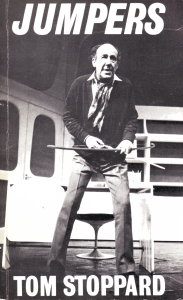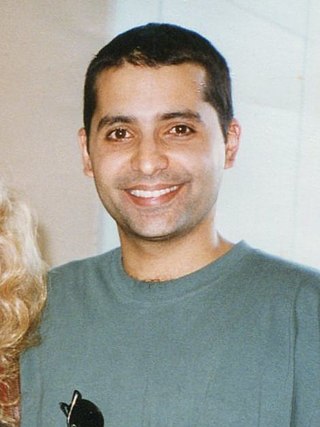
Travesties is a 1974 play by Tom Stoppard. It centres on the figure of Henry Carr, an elderly man who reminisces about Zürich in 1917 during the First World War, and his interactions with James Joyce when he was writing Ulysses, Tristan Tzara during the rise of Dada, and Lenin leading up to the Russian Revolution, all of whom were living in Zürich at that time.

Mary Beth Peil is an American actress and soprano. She began her career as an opera singer in 1962 with the Goldovsky Opera Theater. In 1964 she won two major singing competitions, the Young Concert Artists International Auditions and the Metropolitan Opera National Council Auditions; the latter of which earned her a contract with the Metropolitan Opera National Company with whom she performed in two seasons of national tours as a leading soprano from 1965–1967. She continued to perform in operas through the 1970s, notably creating the role of Alma in the world premiere of Lee Hoiby's Summer and Smoke at the Minnesota Opera in 1971. She later recorded that role for American television in 1982. With that same opera company she transitioned into musical theatre, performing the title role of Cole Porter's Kiss Me, Kate in 1983. Later that year she joined the national tour of Rodgers and Hammerstein's The King and I as Anna Leonowens opposite Yul Brynner, and continued with that production when it opened on Broadway on January 7, 1985. She was nominated for a Tony Award for her portrayal.

The Coast of Utopia is a 2002 trilogy of plays: Voyage, Shipwreck, and Salvage, written by Tom Stoppard with focus on the philosophical debates in pre-revolution Russia between 1833 and 1866. It was the recipient of the 2007 Tony Award for Best Play. The title comes from a chapter in Avrahm Yarmolinsky's book Road to Revolution: A Century of Russian Radicalism (1959).
SubUrbia is a play by Eric Bogosian chronicling the nighttime activities of a group of aimless 20-somethings still living in their suburbian New Jersey hometown and their reunion with a former high school classmate, Pony, who has become a successful musician. Pony's return strips away illusions and excuses to reveal the meaningless dead-end existences of everyone.

Jumpers is a play by Tom Stoppard which was first performed in 1972. It explores and satirises the field of academic philosophy by likening it to a less-than-skilful competitive gymnastics display. Jumpers raises questions such as "What do we know?" and "Where do values come from?" It is set in an alternative reality in which some British astronauts have landed on the moon and "Radical Liberals" have taken over the British government. It was inspired by the notion that a crewed moon landing would ruin the moon as a poetic trope and possibly lead to a collapse of moral values. It has been said that Jumpers is "a play often dismissed as too clever by half", but a number of other writers have listed it among Stoppard's highest achievements.

The Invention of Love is a 1997 play by Tom Stoppard portraying the life of poet A. E. Housman, focusing specifically on his personal life and love for a college classmate. The play is written from the viewpoint of Housman, dealing with his memories at the end of his life, and contains many classical allusions. The Invention of Love won both the Evening Standard Award (U.K.) and the New York Drama Critics Circle Award (U.S.)

Firdous Bamji is an Indian-born actor and writer.
Isabel Keating is an American actress and singer. She is known for her performance as Judy Garland in the original Broadway production of The Boy from Oz, which earned her a Tony Award nomination and a Drama Desk Award.
Rock 'n' Roll is a play by British playwright Tom Stoppard that premiered at the Royal Court Theatre, London, in 2006.
Tom Riley is an English actor, producer, and director.
Michael Cumpsty is a British actor. He made his Broadway debut in the Tom Stoppard play Artist Descending a Staircase (1989). He has acted in plays such as David Hare's Racing Demon (1995), Michael Frayn's Copenhagen (2000), and Democracy (2004), and Sophie Treadwell's Machinal (2014) as well in musicals such as 1776 (1997), 42nd Street (2001), and Sunday in the Park with George (2008). He received a Tony Award for Best Featured Actor in a Musical nomination for his role in End of the Rainbow (2012).
Caroline Eugenie Lagerfelt is a Paris-born American actress, long based in the United States, recognized for her roles on Sweet Magnolias, Gossip Girl, Six Degrees, Dirty Sexy Money, Nash Bridges and Beverly Hills, 90210.

Elizabeth S. "Lisa" Kron is an American actress and playwright. She is best known for writing the lyrics and book to the musical Fun Home for which she won both the Tony Award for Best Original Score and the Tony Award for Best Book of a Musical. Fun Home was also awarded the Tony Award for Best Musical in 2015 and the 2014 Obie Award for writing for musical theater.
In the Native State is a radio play by Tom Stoppard. First broadcast by the BBC in 1991 it was later adapted by Stoppard into the stage play Indian Ink.
Carey Elizabeth Perloff is an American theater director, playwright, author, and educator. She was the artistic director of American Conservatory Theater (A.C.T.) in San Francisco from 1992 to June 2018.

Tribes is a play by English playwright Nina Raine that had its world premiere in 2010 at London's Royal Court Theatre and its North American premiere Off-Broadway at the Barrow Street Theatre in 2012. The play won the 2012 Drama Desk Award for Outstanding Play.
Pam MacKinnon is an American theatre director. She has directed for the stage Off-Broadway, on Broadway and in regional theatre. She won the Obie Award for Directing and received a Tony Award nomination, Best Director, for her work on Clybourne Park. In 2013 she received the Tony Award for Best Direction of a Play for a revival of Who's Afraid of Virginia Woolf? She was named artistic director of American Conservatory Theater in San Francisco, California on January 23, 2018.
Heidi Ettinger, also known by her former married name Heidi Landesman, is an American theatre producer and set designer. She studied at Occidental College and the Yale School of Drama. She was the first woman to win a Tony Award for set design, which she won for the musical Big River. She has also won the Drama Desk Award and Outer Critics Circle awards and an Obie Award.
Clare Barron is a playwright and actor from Wenatchee, Washington. She won the 2015 Obie Award for Playwriting for You Got Older. She was a finalist for the 2019 Pulitzer Prize for Drama for Dance Nation.

Mint Theater Company was founded in 1992 in New York City. Their mission is to find, produce, and advocate for "worthwhile plays from the past that have been lost or forgotten". They have been instrumental in restoring the theatrical legacy of several playwrights notably; Teresa Deevy, Rachel Crothers, and Miles Malleson. As well as producing less produced or forgotten works by noted playwrights such as A. A. Milne, Lillian Hellman, and J. M. Barrie. They have also produced frequently ignored theatrical works by noted authors such as Ernest Hemingway, D. H. Lawrence, and Leo Tolstoy.









